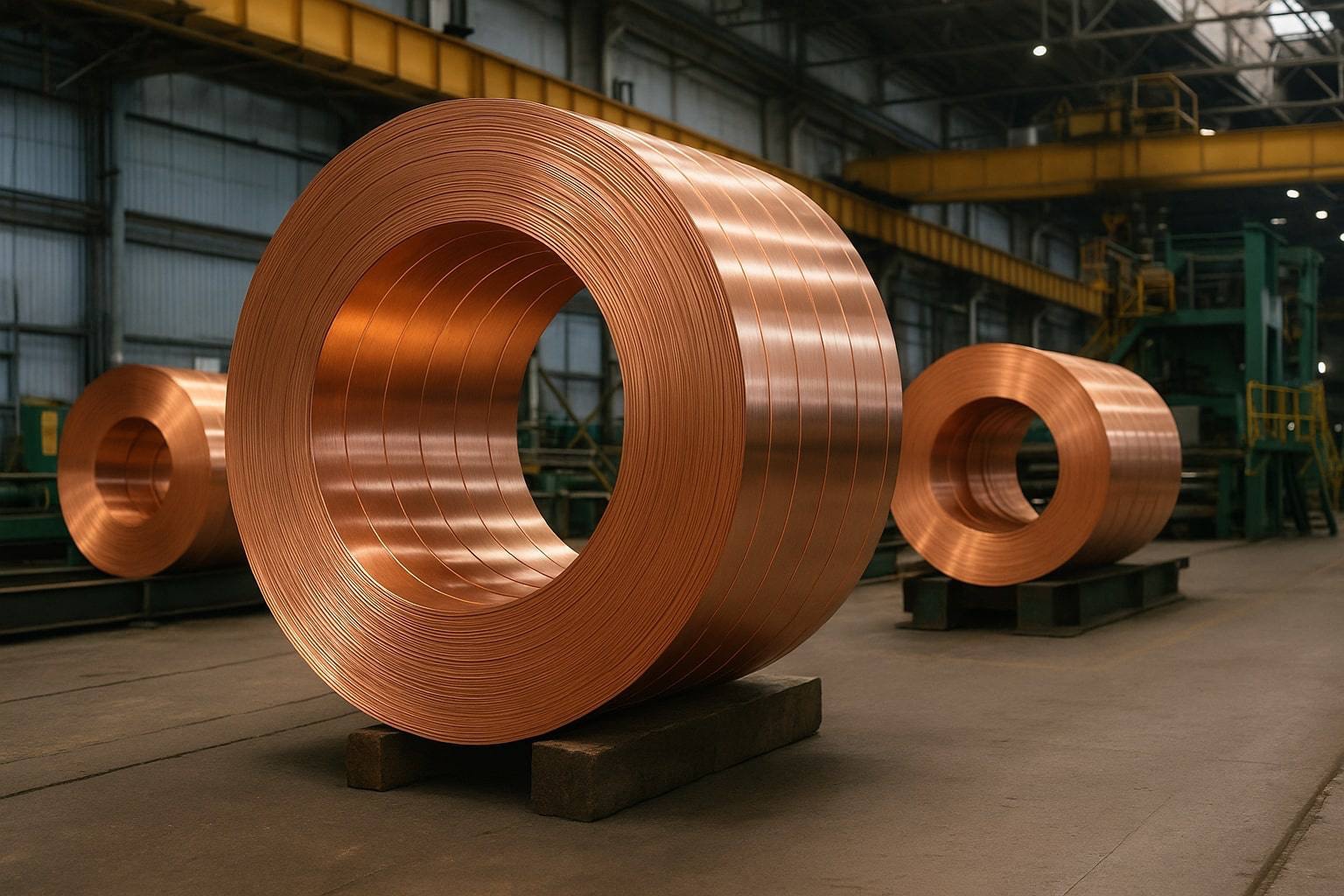The price of copper has reached an all-time high in the history of the global commodities market. This rise is driven by a combination of very strong industrial demand and increasingly constrained supply in various major producing regions. That surge adds new pressure on the manufacturing, energy, and infrastructure sectors that are highly dependent on this red metal.
Analysts warn that this trend could be a signal of a major shift in the dynamics of the global economy. Copper is not only a vital indicator of industrial activity, but also a reflection of the supply chain challenges and the ongoing energy transition around the world.
Global Demand Drivers from the Technology and Energy Industries.
The surge in copper prices is largely due to the increasing demand from the technology sector and renewable energy. Aggressive countries in the energy transition, such as China, the United States, and the European Union, are driving copper consumption for solar panels, electric vehicles, and new power transmission networks.
Copper demand from electric vehicles
Electric vehicles have become one of the main absorbers of this metal. Each electric vehicle unit requires on average three times as much copper as conventional cars. With projections of global electric vehicle sales estimated to surpass 20 million units by 2025, copper demand has also surged dramatically.
Big manufacturers such as Tesla, BYD, and Volkswagen are now racing to secure long-term supply from major miners such as Freeport-McMoRan and Codelco. Industry players estimate that if there is no new investment in major mines, the world could face a structural supply deficit of up to one million tons per year in this decade.
Surge in demand for green infrastructure
In addition to electric vehicles, green infrastructure projects such as the construction of renewable energy transmission networks and AI data center cooling systems are also accelerating copper consumption. Generative AI and global cloud computing are driving a surge in energy demand, which in turn requires high-quality copper-based cables and conductors.
Analysts at Goldman Sachs call copper “the new metal for the digital era” because of its irreplaceable role in the clean energy system.
Supply under pressure from mining disruptions and climate.
The rise in copper prices is not only caused by rising demand, but also by major disruptions on the supply side.
Copper production disrupted in South America.
Several major mines in Chile and Peru, two of the world's largest copper producers, have faced obstacles due to extreme weather, labor strikes, and a decline in ore grades. This condition reduces export volumes and puts global stocks under pressure.
In Chile, the state-owned mining company Codelco reported an annual production decline of 5% due to technical problems and heavy rainfall. Meanwhile, in Peru, social tensions around the mining area have led to the temporary closure of several major facilities.
Delay in new mining investment
In addition, investment in the mining sector is also lagging due to the high environmental costs and regulatory pressures. A new mining project can take up to 7–10 years to reach full production, making it difficult for supply to adjust to the rapidly growing demand.
This condition causes the global market to be out of balance, which then prompts traders and investors to raise the prices of futures contracts on the London Metal Exchange (LME).
Global Economic Impact and National Strategy
The rise in copper prices has a broad impact on the global economy. Raw material costs are rising, triggering inflation in the heavy industry, automotive, and technology sectors.
Pressure on the Manufacturing Sector
Manufacturing companies in Asia and Europe are starting to adjust their production strategies. Some electronics factories are delaying expansion, while electrical cable manufacturers in Japan and South Korea report a decline in margins because they are having difficulty passing price increases on to end consumers.
Moreover, electric equipment factories in Germany and France are complaining about a surge in input costs, which could slow Europe's economic recovery after prolonged inflationary pressures.
Government Response and Reserve Strategy
Some countries are beginning to consider strategic policies to maintain the stability of copper supply. China, for example, increases purchases of national reserves through the State Reserve Bureau to anticipate further price increases. While the United States is exploring cooperation with producers in South America to ensure long-term supply security for the clean energy sector.
The European Union is also accelerating discussions on the Critical Raw Materials Act policy, which aims to reduce dependence on imports of mining materials from outside the bloc.
Prospects and Risks of the Copper Market Going Forward
Copper prices are expected to remain high in the medium to long term. Demand from the green energy and technology sectors will continue to dominate, while supply constraints create structural pressure.
Price Predictions by Financial Institutions
According to the projection of the International Copper Study Group (ICSG), the price of copper could breach US$12,000 per ton in the next 12 months if the supply deficit trend continues. Investment banks such as JPMorgan and Citi even predict the potential for a new "commodity supercycle," similar to what happened in the early 2000s.
However, volatility remains the main risk. If global economic growth slows down or renewable energy projects are delayed, copper demand could be corrected in the short term.
Diversification and Recycling Efforts
To ease the pressure, several countries are starting to promote the circular economy by leveraging copper recycling from electronic waste. New processing technology enables recovery of up to 95% of scrap material, which can help stabilize supply in the future.
Additionally, investment in mining in Africa and Southeast Asia is expected to increase due to relatively lower exploration costs and the potential for new reserves.
increaseCopper priceRising to the world's highest level marks a new phase in the dynamics of the world economy. Demand from the renewable energy sector, electric vehicles, and advanced technology strengthens Copper's position as a strategic commodity for the future. However, tight supply and geopolitical risks could prolong pressure on the global industry.
If this trend continues, that red metal will become the main benchmark for assessing the health of the economy and the direction of the world's energy transition. Readers can follow the latest commodity analysis updates at Insemination through the Global Economy channel.
Discover more from Insimen
Subscribe to get the latest posts sent to your email.










